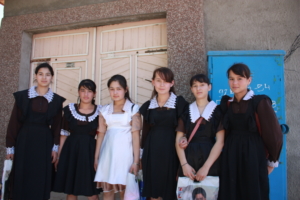Top 8 Facts About Education in Uzbekistan

Since 1925, the Uzbek Soviet Socialist Republic had been following the Soviet Union’s lead in education. But in 1991, after the Soviet Union collapsed, Uzbekistan became an independent state, which led to a need for reform in the public education process. Currently, Uzbekistan, a country with a population of around 32 million, ranks highly among the most developed countries, with an education index of 0.92, compared to the world average of 0.77. How Uzbekistan has reached this education index can be analyzed by looking at eight facts about education in Uzbekistan, focusing on educational reforms, enrollment rates, gender disparities and children with special needs and disadvantaged backgrounds.
8 Facts About Education in Uzbekistan
- Since Uzbekistan is under reform to gradually shift from a planned economy to a liberal market economy, it needs to do so by avoiding social conflicts, since Uzbekistan consists of many ethnicities. At the same time, Uzbekistan wishes to maximize intellectual potential and promote education as a national social priority. Uzbekistan also maintains a centralized form of implementing education reforms that are usually maintained by the National Program of Personnel Training (NPPT).
- One of the key changes in the education processes from 1991 to 2010 was the increase in the years of schooling from 11 to 12 years, where the last three years constitute compulsory secondary education. The Uzbek government expected the top ten percent of students graduating from high school to attend the more academic-oriented Academic Lyceum, and the other 90 percent to attend more technically and vocationally oriented institutions.
- Enrollment rates in both primary and secondary education reduced in Uzbekistan during the first part of the 1990s when the state got its independence, but they steadied by the 2000s. It is currently stabilized at 100 percent for primary education for both boys and girls. As for secondary education, it has steadily increased from around 89 percent in 2009 to above 92 percent in 2017 for both boys and girls.
- In addition to the NPPT, there are three other specialized ministries that are involved in the education reforms in Uzbekistan: the Ministry of Preschool Education, the Ministry of Public Education and the Ministry of Higher and Secondary Specialized Education. The Uzbek government also devotes a large share of its resources and expenditures on education, at a 34.2 percent share of the 2017 state budget. Meanwhile, the average government expenditure on education for OECD countries stands at an average of 13 percent.
- Despite the high percentages among male and female students, there is still some gender disparity in education in Uzbekistan. Women are only a minority of students enrolled in higher education institutions, making up only 38.2 percent. In secondary education, the ratio of girls to boys has decreased from 0.39 in 2000 to 0.37 in 2011.
- UNICEF is advocating for Uzbek children who are at the appropriate age to be present in preschool establishments. The organization argues that the lack of access to early learning and developmental skills does not allow for the maximization intellectual potential. In Uzbekistan, less than 30 percent of children have access to quality preschool education, which mostly consists of urban male children. However, this will change, as there are regional plans to increase access to these programs in Bukhara, Djizzakh and Samarkand.
- Education in Uzbekistan for children with disabilities has been getting more attention recently, as a pending new law in education is to be released that would protect the rights of these children and their education. At the present rate, the number of children with special educational needs enrolled is at a nationwide average of 0.79 students per school. The schools which accommodate these children are the only ones who currently offer accessible or inclusive classes.
- The government attempts to provide support to children from low-income families and orphans. Such students qualify for free school materials, including textbooks and school accessories. In addition, around 80,000 children from a low-income background are exempted from tuition fees for preschool education.
These eight facts about education in Uzbekistan only provide a brief insight into the current situation and how it can be improved. Comparatively, education in Uzbekistan is performing at a better rate than its neighboring countries of Kazakhstan and Tajikistan. Uzbekistan continues to strive for equality among its citizens, which include their rights to an education.
– Nergis Sefer
Photo: Wikimedia
